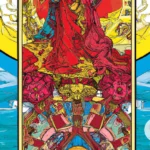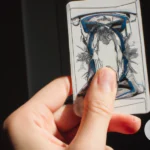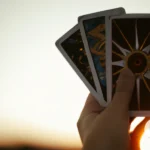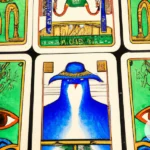Tarot readings are often associated with providing insights into the future and helping individuals to make important decisions. However, the use of card reversals in tarot readings is a topic that sparks curiosity and debate within the tarot community. While some tarot readers swear by the importance of reading reversed cards, others dismiss their significance altogether. In this article, we will explore the world of tarot card reversals, discussing why some tarot readers use them, how to read and interpret them, the advantages and disadvantages of using them in readings, as well as tips for reading and shuffling reversed cards. We will also address common misconceptions associated with the practice of reading reversed cards, helping you to deepen your tarot reading practice.
What are Tarot Card Reversals?
Tarot Card Reversals refer to the practice of reading tarot cards upside down, contrary to their upright position. When a tarot card appears in reverse, it changes the energy and meaning of the card. After shuffling the cards, some readers intentionally deal them in a reversed position. Others may turn them over during the reading to interpret them in a reversed state. Understanding reversed tarot cards is an essential skill for any tarot reader, but it is not strictly necessary to use reversals in a tarot reading.
Reversed cards can indicate blockages, delays, internal conflicts, or negativity. They can also highlight something that’s hidden, repressed, or in need of attention. The reversed tarot meaning can be the opposite of the upright meaning or provide an extra layer of significance to the card. Some tarot card readers consider these cards to be more complex and nuanced, while others find them more confusing or distracting.
Using tarot card reversals can add depth and richness to a tarot reading. They can provide a different perspective, offer more information, or bring attention to something that could be overlooked in a reading using only upright cards. However, they are not necessary for a tarot reading to be accurate, insightful, or helpful. It’s up to each reader to decide whether or not to use reversals in their tarot practice.
If you’re looking to improve your tarot reading skills, you may be interested in checking out some of our related articles, such as Developing Your Intuition with Tarot Tips, How to Read Tarot Cards Yourself, Different Spreads and How to Read Them, Tarot: Asking the Right Questions, Synchronicity and Tarot: Finding Meaning in Coincidences, Multiple Meanings of Tarot Cards, and Tarot Psychology and Self-Discovery.
Why Do Some Tarot Readers Use Reversals?
There are various reasons why some tarot readers choose to use reversed cards in their readings. One of the most prevalent reasons is that it adds another layer of depth to the reading. When a card is drawn upright, its meaning is clear and straightforward. However, when a card is drawn reversed, the meaning becomes more complex and nuanced, as it suggests that the energy of the card is blocked or inverted.
Additionally, some tarot readers believe that reversed cards indicate a need for reflection and introspection. When a reversed card appears in a reading, it can be viewed as an invitation to explore the underlying issues that are preventing progress or causing challenges.
Using reversed cards can also help the tarot reader assess a situation from multiple angles. It allows for a more balanced and well-rounded interpretation of the cards, which can provide a deeper understanding of the querent’s situation.
Some tarot readers believe that using reversed cards can help challenge biases and preconceptions. Often, tarot readers might unconsciously interpret cards in a certain way based on their personal experiences and beliefs. Reversed cards can help counteract this tendency by introducing unexpected and sometimes contradictory meanings.
Lastly, using reversed cards can add an element of surprise and unpredictability to the reading. It keeps the tarot reader and the querent on their toes, encouraging them to approach the reading with an open mind and to be receptive to unexpected insights and revelations.
There are many reasons why some tarot readers choose to use reversed cards in their readings. Whether it’s for added depth, reflection, balanced interpretation, challenging biases, or unpredictability, reversed cards can be a valuable tool for tarot readers who want to provide more comprehensive and insightful readings for their clients.
How to Read Reversed Cards?
Reading reversed cards in a tarot reading can be a little daunting, especially if you’re new to it. Here are some tips to help you decipher their meanings:
- Consider the Card’s Energy: Reversed cards can bring a different energy than upright cards, but still fall under the same card meaning. For example, the reversed Fool card doesn’t mean the opposite of the upright Fool card, but it may suggest caution or hesitation in taking risks.
- Pay Attention to the Reversal Position: Noting how the card is reversed can also give you insight into its meaning. If a card is upside down, it could represent something hidden or blocked. If it’s tilted to the left or right, it could indicate imbalance or instability.
- Look for Contrasting Imagery: Sometimes reversed cards will have contrasting imagery than the upright version. For example, the upright Five of Cups often features a figure mourning over spilled cups, but in the reversed version, the figure may be looking at the two cups that are still standing.
- Consider the Question Asked: The context of the question can also impact the meaning of a reversed card. If the reading is focused on career and the reversed Hierophant card appears, it could suggest a need to challenge traditional methods or breaking away from a strict structure.
It’s important to note that there is no one “right” way to interpret reversed cards in tarot readings. As you gain more experience, you’ll develop your own methods and intuition for reading them. But by keeping these tips in mind, you’ll be better equipped to tackle the challenges and insights that reversed cards can offer.
Advantages of Using Reversals in Tarot Readings
There are many advantages to using reversals in Tarot readings. Here are a few reasons why some Tarot readers choose to incorporate reversals into their practice:
| Advantage | Description |
| Variety | Using reversals adds a new layer of complexity and depth to the reading. It can provide different perspectives and interpretations that may not be present in upright cards. |
| Nuance | Reversed cards can offer a more nuanced understanding of the situation at hand. Rather than a black-and-white answer, the Tarot provides more shades of gray. |
| Balance | Reading only upright cards can give an overly positive or optimistic view of the situation. Reversals bring balance and can offer a more realistic assessment. |
| Growth | By forcing readers to look beyond the traditional meanings of cards, reversals can help them grow and develop their skills. It encourages deeper thinking and more detailed interpretations. |
Incorporating reversals into a Tarot reading can add richness and depth to the experience. It can help readers gain a more balanced and nuanced understanding of the situation, and it can improve their skills as a Tarot reader.
Disadvantages of Using Reversals in Tarot Readings
Although there are many advantages to using tarot card reversals in readings, there are also several potential disadvantages that tarot readers need to be aware of. These include:
| Disadvantage | Description |
| 1. Overcomplicating Readings | While reversals can add depth and complexity to a reading, they can also make interpretations more convoluted and difficult to understand. |
| 2. Risk of Bias | Readers can become too attached to the idea of reversals and begin to interpret all reversed cards as inherently negative or problematic, leading to a biased reading. |
| 3. Intimidation in Beginners | For beginners, learning to interpret upright cards can already be overwhelming, so adding reversals to the mix can be daunting and lead to discouragement. |
| 4. Reduced Intuitive Connection | Some readers find that obsessing over whether a card is reversed or upright can take away from the intuitive connection they have with the cards, hindering the accuracy of their readings. |
It is important for tarot readers to understand the potential drawbacks of using reversals and to weigh them against the benefits before deciding whether or not to incorporate them into their practice. By doing so, they can ensure that their readings are accurate, meaningful, and helpful for their clients.
Tips for Reading Reversed Cards
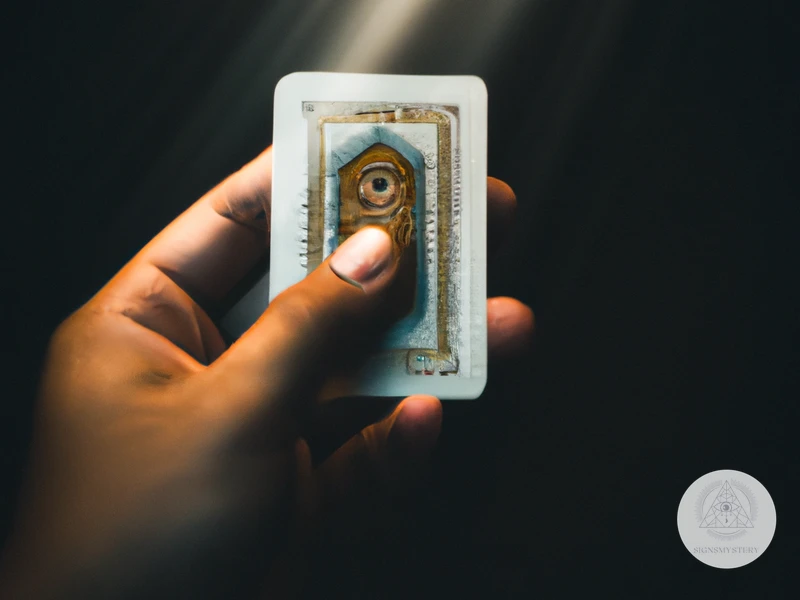
When reading reversed cards in a Tarot reading, there are certain tips that can help you to get the most accurate and insightful interpretation possible. Keep these tips in mind as you delve into the world of reversed Tarot cards.
Always consider the context of the reading when interpreting reversed cards. Reversed cards can represent a range of meanings, from delays and obstacles to inner conflict or inverted energy. The context of the reading can help you to determine which meaning is most relevant in this particular situation.
One of the most important aspects of interpreting reversed Tarot cards is to pay attention to the energy of the cards. This means tapping into your intuition and really feeling into the cards themselves. Consider the emotions and images that the cards evoke, and use these insights to guide your interpretation of the cards.
The imagery in Tarot cards is rich with symbolism and hidden meanings, and reversed cards are no exception. When interpreting reversed cards, pay close attention to the symbols and images on the cards themselves. These can help to shed light on the meaning of the reversed card and provide valuable insight into the situation at hand.
While reversed cards can be a powerful tool for gaining insight into the deeper meanings of a Tarot reading, it’s important to use them sparingly. Overuse of reversed cards can lead to confusion and muddled interpretations. Instead, focus on using reversed cards in situations where they are truly necessary, and always be mindful of the context of the reading.
By keeping these tips in mind, you can gain a deeper understanding of the meanings of reversed Tarot cards, and use these insights to provide more accurate and insightful Tarot readings. Remember that Tarot readings are a powerful tool for gaining insight and clarity into any situation, and that there is always more to learn about this complex and fascinating subject.
Pay Attention to the Context of the Reading
When reading reversed tarot cards, it’s essential to pay attention to the context of the reading. Every card has multiple meanings, and the context of the reading can help you determine which meaning applies to the situation at hand. Here are some things to consider when interpreting reversed cards based on the context of your reading:
- Suit: The suit of the card can play a significant role in interpreting its meaning. For example, a reversed Pentacles card could indicate a financial loss, whereas a reversed Swords card could signify indecision or confusion.
- Position: The position of the card in the spread can also impact its meaning. A card in a “past” position may indicate something that has already happened, while a card in a “future” position may suggest something that’s yet to come.
- Question: Consider the question you asked or the topic of the reading. How does the reversed card relate to this? Does it provide insight into a particular aspect of the question or offer a warning about potential pitfalls?
It’s important to approach reversed cards with an open mind and consider all possible interpretations based on the context of the reading. Don’t jump to conclusions or assume that a reversed card always has a negative connotation. In some cases, a reversed card can indicate a need for change or a different approach to a situation. Paying attention to the context of the reading can help you more accurately interpret reversed cards and deliver insightful readings for yourself or your clients.
Focus on the Energy of the Cards
When reading reversed tarot cards, it’s important to focus on the energy of the cards. Each card has its own unique energy, and when it’s reversed, that energy can shift and change. By tuning in to that energy, you can gain a deeper understanding of the reversed card’s meaning.
One way to focus on the energy of the cards is to hold them in your hands and meditate on them before the reading. Close your eyes and take a few deep breaths, allowing your mind to quiet down. Then, visualize the card’s imagery and try to sense its energy. Does it feel heavy or light? Does it have a warm or cool sensation? Is the energy of the card different from what you normally feel when you pull this card upright?
During the reading, pay attention to the emotions and sensations that the reversed card elicits. You might feel a sense of uneasiness or confusion, or you might have a sudden insight or realization. Take note of these reactions, as they can provide valuable information about the message the card is trying to convey.
Another way to focus on the energy of the cards is to use your intuition. Rather than relying solely on the traditional meanings of the cards, allow your instincts to guide you. Listen to the whisperings of your inner voice as you interpret the reversed card, and trust that your intuition will lead you in the right direction.
Finally, keep in mind that the energy of the reversed card is just one part of the overall reading. It’s important to consider the energy of the other cards in the spread, as well as the context of the situation being explored. By putting all the pieces together and staying open to different interpretations, you can gain a deeper understanding of the message the cards are trying to convey.
Look for Clues in the Imagery
When interpreting a tarot reading with reversed cards, the imagery on the tarot cards can offer important clues and insights. Look closely at the visual cues and symbolism on the cards to gain a deeper understanding of their meaning.
Color: Pay attention to the colors on the card and how they may differ from the upright version. Darker or more muted colors may indicate negative, blocked, or stagnant energy, whereas brighter or more vibrant colors may suggest positivity, growth, or a release of energy.
Symbols: The symbols on the card can offer a lot of insight into the reversed meaning. For example, if the upright card shows a person standing tall with a sword, but the reversed version shows the same person falling backwards, this may indicate a loss of power or defeat.
Positioning: The position of any figures or objects on the card can tell a story of their own. For example, in the reversed Three of Swords, the swords may be pointed downward, indicating the release of pain or heartache.
Direction: The direction in which figures are facing or objects are positioned can also offer clues. In the reversed Tower card, for example, the lightning bolt may be striking from the bottom up, suggesting a potential rebuilding or positive transformation.
By paying attention to these visual clues, one can gain a deeper understanding of the reversed card’s meaning and how it relates to the overall reading. However, it’s important not to rely solely on the imagery, and to consider the context of the reading and the energy of the cards as a whole.
Use Reversals Sparingly
When using reversals in tarot readings, it is important to remember that they should be used sparingly. Although they can provide valuable insights and additional layers of meaning, too many reversed cards can make a reading confusing and overwhelming. Here are some tips for using reversals in an effective and balanced way:
- Limit the number of reversed cards: As a general rule, no more than 20-25% of the cards in a reading should be reversed. This ensures that the upright cards still hold a prominent position in the reading and allows the reader to focus on the most important messages coming through.
- Consider the querent’s preferences: Some clients may be uncomfortable with or skeptical of reversed cards. In these cases, it may be best to avoid using them altogether or to use them only sparingly.
- Use reversed cards selectively: When a reversed card does appear in a reading, pay close attention to its position and the surrounding cards. Is it a major or minor arcana card? Is it in a key position such as the past, present, or future? Use the reversed card as a tool for gaining deeper insight into the question at hand, rather than as a default interpretation.
It is also important to approach reversed cards with an open mind, rather than assuming that they always indicate negative outcomes. While they can certainly suggest challenges or obstacles, they can also indicate opportunities for growth and transformation. By using reversals sparingly and thoughtfully, a tarot reader can harness their power to provide nuanced and insightful readings.
How to Shuffle and Deal Reversed Cards
Shuffling and dealing reversed cards requires a different approach than shuffling and dealing upright cards. Here are some methods to ensure that your reversed cards are thoroughly shuffled and dealt properly during your tarot readings:
Shuffling Methods for Reversed Cards:
1. The Overhand Shuffle: This is a simple way to shuffle your deck of reversed cards. Hold the deck in one hand, and use the other hand to pull off small sections of the cards and place them on top of the deck. Continue until you have shuffled the entire deck.
2. The Pile Shuffle: In this technique, you divide the deck into smaller piles and then stack them up. Start by separating the deck into three or four piles and then stack them on top of each other.
3. The Hindu Shuffle: This is similar to the overhand shuffle, but instead of placing the cards on top, you place them at the bottom of the deck. Hold your deck with one hand and then use the other hand to slide cards off the top and onto the bottom of the deck.
Dealing Reversed Cards:
1. Choose Your Spread: Before you deal any cards, decide which spread you want to use for the reading. There are many different spreads to choose from, so choose one
Subscribe to Our Newsletter
Sign up to receive the latest news and updates.
2. Divide the Deck: To begin the reading, divide the deck into two piles, one for upright cards and one for reversed cards.
3. Deal the Cards: Begin dealing your cards. If a reversed card appears, place it in the pile for reversed cards. If an upright card appears, place it in the upright pile.
4. Interpret the Cards: After all the cards have been dealt, interpret each card in the spread, paying close attention to any reversed cards. Take note of how the reversed position affects the meaning of the card and how it relates to the overall spread.
Remember that shuffling and dealing reversed cards are crucial aspects of any tarot reading. Make sure you shuffle the deck thoroughly and deal the cards appropriately, so you can get the most out of your readings.
Shuffling Methods for Reversed Cards
When it comes to shuffling reversed Tarot cards, there are a few methods that can help you ensure that the cards are properly mixed. One popular method is to simply shuffle both the upright and reversed cards together, treating them all the same. However, some Tarot readers prefer to shuffle the reversed cards separately from the upright cards. Here are some common shuffling methods for reversed cards:
1. Overhand Shuffle: This is the most common way to shuffle Tarot cards. Hold the reversed cards with one hand and the upright cards with the other hand. Then, shuffle each set of cards separately using the overhand shuffle technique. After shuffling each set, combine them together.
2. Pile Shuffle: The pile shuffle method involves separating the reversed cards from the upright cards and shuffling each pile separately. To pile shuffle, take each set of cards and form several small piles of cards. Then, place each pile on top of the other until all the cards are stacked together again.
3. Randomize the Deck: One way to shuffle reversed Tarot cards is to simply randomize the entire deck. To do this, shuffle the deck normally but make sure to turn some of the cards upside down as you shuffle. This will ensure that the reversed cards are properly shuffled and mixed in with the upright cards.
No matter which shuffling method you choose, it’s important to focus your energy on the intention of the reading as you shuffle the cards. Take your time and allow the energy of the cards to guide you. With practice, you’ll find the shuffling method that works best for you and your personal reading style.
Dealing Reversed Cards
Dealing with reversed cards in a tarot reading can be a bit tricky, but there are a few techniques that can help you optimize their usage. The first step is to shuffle the deck thoroughly before laying out the cards. Here are some tips on how to deal with reversed cards in a tarot reading:
| Technique | Description |
| 1. Reverse Half the Deck | In this technique, the reader shuffles the cards as usual and then splits the deck roughly in half. One half is turned upside down and placed on top of the other half, creating a reversed pile of cards that will be used during the reading. |
| 2. Use an even-odd system | In this technique, the reader assigns even numbers to upright cards and odd numbers to reversed cards. Each card receives a number, and the reader draws them randomly, taking care not to choose two cards with the same number in a row. |
| 3. Choose a separate deck for reversals | Some readers prefer to use a standalone deck specifically for reversed cards. This can help them to focus on the reversed meanings without confusion from the upright meanings of a traditional tarot deck. |
Once you have decided on a method for dealing with reversed cards, it is important to remember not to panic or overreact when a reversal appears in a reading. There is no need to automatically assume the worst; rather, try to consider the reversed card within the context of the overall reading.
Remember, tarot readings are not set in stone and are always subject to change. A reversed card may simply indicate a delay or setback in a particular situation, or it may suggest the need to approach the situation from a different angle. By keeping an open mind and carefully interpreting the reversed card, you can gain a deeper understanding of the situation and provide valuable insight for your client.
Common Misconceptions about Reversed Cards
Tarot is an ancient form of divination that has been around for centuries. Despite its longevity, tarot still remains shrouded in mystery, and many people hold misconceptions about reverse cards. Here are some of the most common myths about reversed tarot cards:
| Myth | Truth |
|---|---|
| Reversed cards always indicate negative outcomes | The truth is that reversed cards can indicate negative outcomes, but they can also indicate positive outcomes. Reversals are not inherently good or bad- they simply add a layer of depth and complexity to the reading. |
| Reversed cards mean the opposite of upright cards | Another common myth is that reversed cards mean the complete opposite of the upright card. However, reversals don’t always have to be the polar opposite of the upright card. Rather, they can indicate a blockage, delay, or a need for caution and introspection. |
| Reversed tarot cards are always significant | Some readers feel like reverse cards must always be significant, while others feel like they are only occasionally significant. The truth is somewhere in between- if a reversed card appears in a reading, it’s worth considering, but it doesn’t always have to be the main focus. |
| Reversed cards always refer to internal issues | While reversed cards can certainly refer to internal issues, they can also refer to external challenges. For example, a reversed 7 of Swords could indicate dishonesty from an external source, rather than internal deceit. |
| Reversed cards are more difficult to interpret than upright cards | Reading reversed cards can feel intimidating at first, but they are just as valid as upright cards. If you find reversals challenging, try focusing on the energy of the card and the context of the reading to gain insight into its meaning. |
By dispelling these common misconceptions, we can gain a better understanding of the role that reversed cards play in tarot readings. Remember, tarot is a tool for spiritual growth and inner exploration, and there are no hard and fast rules when it comes to interpreting the cards. The most important thing is to trust your intuition and let the cards guide you.
Reversed Cards Always Indicate Negative Outcomes
One of the most common misconceptions about reversed tarot cards is that they always indicate negative outcomes. This is simply not true. In fact, many card reversals can bring positive messages and intuitions to your reading.
It’s important to remember that the meaning of a tarot card, whether reversed or upright, depends on the context of the reading, the querent’s situation, the question asked, and the energy of the cards surrounding it.
To help you understand better, here are some examples of reversed tarot cards and their potential meanings:
| Reversed Card | Potential Meanings |
|---|---|
| The Tower | Instead of a sudden destruction or upheaval, it could represent a wake-up call or a necessary change. |
| Death | Can indicate a necessary ending or transformation rather than a physical death. |
| Three of Swords | Instead of heartbreak or loss, it could represent healing and forgiveness. |
| The Fool | Can indicate taking a leap of faith or a new beginning rather than foolishness or naiveté. |
These are just a few examples, but they show how reversed cards can bring different perspectives and nuances to a reading. It’s all a matter of interpretation and intuition.
Reversed tarot cards do not always indicate negative outcomes. In fact, they can often bring positive messages and insights to your reading. It’s crucial to approach them with an open mind and to read them in the context of the whole spread and the querent’s situation.
Reversed Cards Mean the Opposite of Upright Cards
One common misconception about reversed tarot cards is that they always indicate the opposite of upright cards. This doesn’t always hold true and can be a dangerous oversimplification for any tarot reader to follow.
While some cards do have a clear and predictable opposite, such as the Empress card, which represents nurturing, abundance, and motherhood, its opposite, the Emperor card, symbolizes paternal authority, logic, and structure, not all cards have such clear-cut meanings.
For example, the Hanged Man card when upright often indicates suspended progress, sacrifice, and a new perspective, but when reversed, it can mean resistance to change, delays, or feeling stuck. The meaning of reversed cards often depends on the context of the reading and the energy of the other cards surrounding it.
To further understand the complexity of reversed cards, refer to the following table that demonstrates the different interpretations of two commonly reversed cards, the Five of Swords and the Tower.
| Card | Upright Meaning | Reversed Meaning |
|---|---|---|
| Five of Swords | Conflict, Loss, Betrayal | Reconciliation, Making Amends, Compromise |
| Tower | Disaster, Upheaval, Revelation | Avoidance of Disaster, Preparing for Change, Revelation |
As you can see, the reversed meaning of these cards is not always the polar opposite of the upright meaning. Rather, it can be more nuanced, suggesting a different approach to the problem or a shift in energy.
It’s important to avoid the oversimplification that reversed cards always mean the opposite of upright cards. Tarot readings are not black and white, and relying on this belief can limit the depth and accuracy of the reading.
Conclusion
In conclusion, the use of reversed tarot cards is a personal choice for tarot readers. While some choose to incorporate them into their readings, others prefer to stick with upright cards only.
However, it is important to approach reversed cards with an open mind and a willingness to explore their potential meanings. Reversed cards can offer valuable insights into a situation or question, providing deeper nuances and a different perspective.
Remember, reversed cards are not always negative, and they do not necessarily mean the opposite of upright cards. Rather, they offer a unique energy to a reading that can be useful in gaining a more comprehensive understanding of the situation at hand.
If you choose to use reversed cards in your tarot readings, it’s important to approach them with care and attention. Paying attention to the context of the reading, focusing on the energy of the cards, and looking for clues in the imagery can all help you interpret reversed cards more effectively.
Ultimately, the most important thing is to trust your intuition and let the cards speak to you. Whether reading upright or reversed cards, tarot can offer powerful insights and guidance to those who seek it.
Thank you for taking the time to read about the importance of card reversals in tarot readings. May your tarot journey be filled with insightful readings and meaningful discoveries.
Frequently Asked Questions
What is the significance of Tarot Card Reversals?
Tarot Card Reversals offer additional depth and complexity to a reading, allowing for a more nuanced interpretation of the cards’ meanings.
Can Tarot Reversed Cards mean the opposite of upright cards?
While this may be true for some cards, it’s not always the case. Reversed cards can sometimes enhance or accentuate the upright meaning, rather than reversing it.
Do all Tarot readers use reversals in their practice?
No, not all Tarot readers use reversals. It’s a matter of personal preference and style.
How can I know if a reversed card is relevant for my reading?
Pay attention to the energy and context of the spread. Reversed cards can indicate obstacles or challenges, but they can also highlight hidden opportunities or strengths.
Are reversed cards always negative?
No, reversed cards can also indicate positive changes or growth, especially if you’re in a situation that requires breaking away from old patterns or beliefs.
What should I do if I’m uncomfortable with reversed cards?
If you don’t feel comfortable using reversed cards, it’s perfectly okay to stick with only upright interpretations. However, keep in mind that you may be missing out on valuable insights and advice.
What’s the best way to shuffle and deal reversed cards?
There’s no one-size-fits-all method, but some common techniques include mixing the cards while holding them upside-down, or splitting the deck in two and flipping one half over before shuffling them together.
Can I read reversed cards with any type of deck?
Yes, reversed cards are a feature of most Tarot decks, but they can also be used with other divination systems, such as Lenormand or Oracle cards.
What’s the difference between reversed cards and inverted cards?
There’s no real difference – “reversed” is the more common term within the Tarot community, while “inverted” is sometimes used to describe cards that are turned upside-down.
Do reversed cards have any symbolic meaning?
Reversed cards can be seen as representing an energy that’s going against the flow or moving in a different direction from the norm. They may also indicate a need to pay attention to the inner world rather than external circumstances.



